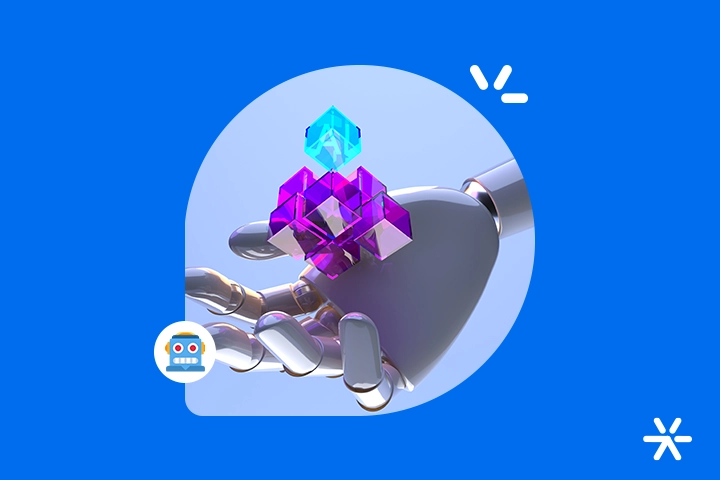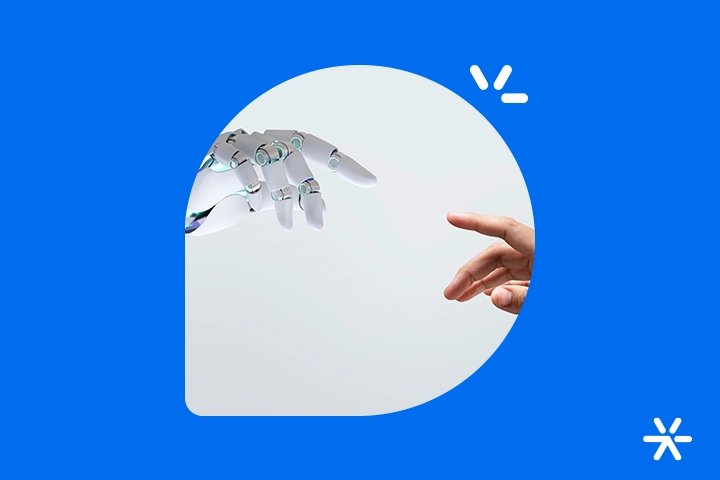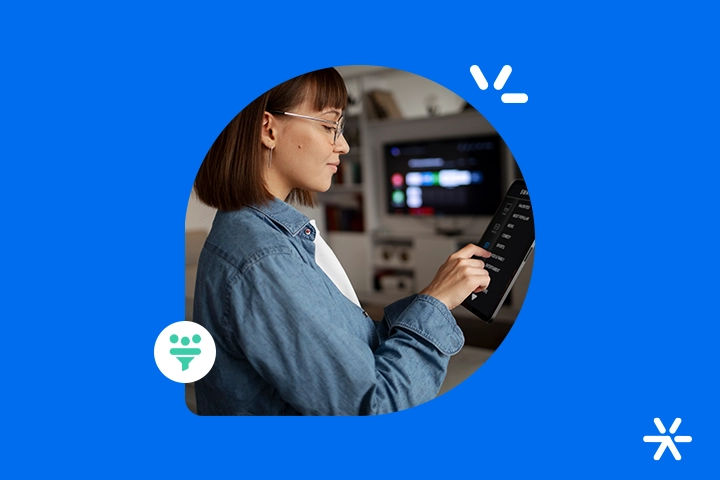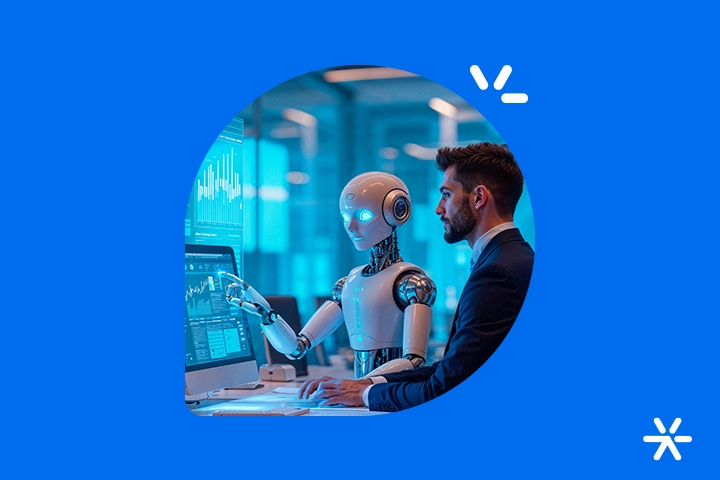What is Multimodal AI?
Recent advancements in Artificial Intelligence are all pointing towards multimodal AI.
I don’t know if you are familiar with our category of articles dedicated solely to Artificial Intelligence here at Leadster, but if you are, you certainly know how we’ve always discussed how AI is evolving to reach the Iron Man-style Jarvis.
Basically, for those who are not Marvel fans, this type of AI functions almost like a butler.
“Jarvis, recreate the building parameters for my latest suit. And go ahead and clean the house and make an orange juice without sugar, but still quite sweet.”
What we mean by this comparison is that AI is advancing to the point where it can handle multiple tasks at the same time.
This is what Multimodal AI promises and delivers.
Today, we’ll dive deeper into this concept and explore: What is Multimodal AI, its main uses in marketing strategies, and which tools with this functionality you can already try today.
Are you ready to start?
What is Multimodal AI?

To understand Multimodal AI, it’s important to grasp what conventional AIs are unable to do.
Take the free version of ChatGPT as an example. If you ask it to create a video, it will give you a script for recording and editing, but it won’t deliver the video itself.
Similarly, if you ask Midjourney to create a text, it won’t be able to—its focus is on image creation.
Up to this point, the standard for AIs has been to create a single type of material through prompts, usually text or attachments.
Multimodal AI is the type of AI that can deliver multiple types of materials at once, within the same tool.
It’s like asking ChatGPT to create a video script and going beyond that—creating the video itself, creating thumbnails for that video, creating images related to the video for social media, narration for insertion in the material, and anything else needed.
This is the future path for AI. Today, you need several tools—and consequently, several subscriptions—to obtain such complete materials.
However, we also need to understand that although Multimodal AI is taking its first steps, it is still somewhat far from being able to produce all these materials.
We’ll discuss this in more detail in the section below. Let’s move forward:
Basic Multimodality vs. Advanced Multimodality
It’s important to highlight that there are two types of multimodality: basic and advanced.
A simple Multimodal AI is one that can receive different types of input and combine them—for example, DALL-E can produce images based on text prompts as well as image prompts.
Moreover, Multimodality requires that the system can combine these two prompts.
It’s as if I create a hybrid prompt that combines both image and text and achieve the expected result.
At the same time, advanced Multimodality goes a step further—it supports both the input and output of multimedia materials.
It’s important to make this distinction because we’ll delve more into it later in the article, especially in the section with examples.
What to Expect from Multimodal AI Development in 2025?
Multimodal AI is developing little by little, just like Artificial Intelligence itself needed several years to reach the level we have today.
2025 is the year of Multimodal AI, but instead of singular, this phrase should be plural—the year of Multimodal AIs.
It’s quite likely that we will see already established AIs expanding their areas of operation and transforming into other types of products, able to deliver even more.
However, it’s less likely that we will see large integrated systems capable of doing everything—after all, “everything” in this case has already become quite varied.
To clarify—today there are various types of AI:
- AIs for Digital Marketing;
- AIs for Analytics;
- AIs for content creation;
- AIs for image creation;
- AIs for video creation;
- AIs for customer service;
- AIs for e-commerce;
- AIs for programming;
- Algorithmic AIs;
- Among other more advanced types.
There’s no reason for a video-creating AI to suddenly start offering communication methods with SQL servers.
In fact, it’s worth clicking on these links to check out our articles on these topics—they’re always in-depth.
Similarly, there’s no need for an AI analyzing your metrics to start offering images unless it’s an AI designed for creating ads.
So, what we’ll see in this regard are various multimodal AIs that will offer resources within their possibilities and areas of expertise.
Let’s take an example:
A Practical Example of Multimodal AI: Leadster.AI
Leadster.AI uses ChatGPT to provide customer service to clients and prospects on your website.
But it doesn’t just perform this function. With it, you can also create product descriptions based on your specifications.
In other words: you install the chatbot on a page, it reads the product specifications, and can provide you with a description in a few seconds.
This is an example of Multimodal AI, but within this multimodality, it presents specific uses.
Throughout the article, we’ll explore this concept with some examples. But before we dive in, we need to discuss the uses of Multimodal AI specifically in Digital Marketing.
Oh, if you’d like to see Leadster’s AI in action, just click the banner below:
What are the Uses of Multimodal AI in Digital Marketing?

The uses of Multimodal AI in Digital Marketing are absolutely diverse, precisely because Digital Marketing itself is broad with various functions and segments.
Multimodal AI can be applied today in some of these areas, but not all.
In this section, we’ll mainly discuss the expected uses of Multimodal AI within Digital Marketing routines, but we cannot yet guarantee full functionality in every case, as the development of these systems is still ongoing.
This is the time to prepare for these systems. And it’s in the following sections that we’ll understand exactly how this preparation takes place.
Let’s dive in:
The Revolution in Content Production with AI
Producing content with AI today is a multidisciplinary collaborative effort.
This means that AI collaborates with human content creators to be efficient, and to have a solid strategy in place, it is absolutely necessary to have various types of AI working together.
It might not be necessary to use several different AIs to produce a single piece of content, but content marketing teams typically don’t produce just one type of material.
A team will create eBooks, videos, blog posts, whitepapers, and whatever else is possible within a content strategy.
Relying on AI support in these processes usually involves a preferred AI. What it can do supports what it cannot do.
With Multimodal AI, it is entirely possible to integrate these processes.
For example: the same AI that produces images can also help with the eBook layout and create small teasers for the video launch.
This brings a great revolution to content—the true integration between human creativity and the reduction of repetitive work that AI brings.
And this opens doors for the production of other types of materials. More on this below:
Production of Previously Inconceivable Material
There are some types of materials that are limited by the inability of smaller teams to produce them.
Videos are a big example of this. It doesn’t help to have ChatGPT as a partner in script creation if there aren’t videomakers to edit the materials.
And I’m not even talking about very complex videos. Even simple motion design videos aren’t easy to make without a professional dedicated to it.
By outsourcing this work, the cost can easily reach R$ 1,000 for a two-to-three-minute video.
There are digital marketing agencies, for example, that don’t even offer this kind of service, and if a client requests it, the associated costs might make them refuse the service.
Multimodal AIs allow for much greater ease in production. It’s not necessary to buy a separate generative AI model for text, another for images, another for video, etc.
A single model can solve all the needs, enabling the company to access areas that were previously simply closed off due to high costs.

Higher Fidelity in Operations with AI
One of the biggest problems with generative AI is hallucinations — the small mistakes they make here and there.
This is quite apparent in images. No matter how realistic the image the AI delivers, it still comes with details that are clearly wrong.
These details need to be corrected by a human operator. The issue is that these details can sometimes go unnoticed, especially when everyone is in a rush to launch a campaign.
And rushing to launch a marketing campaign is pretty much the life of every professional in the field.
Multimodal AI becomes more accurate by receiving different inputs. For example, you can ask the AI that created the image to do a review and point out the main errors in text form.
Then, you can pass this correction guide to the human professional.
It’s not worth asking the AI to correct it because it will come back with other errors that also need to be corrected.
But even these common AI errors become less prominent with multimodal systems.
The ability to add various different resources to your prompt increases the AI’s overall fidelity, drastically reducing the work needed to correct the AI.
Behavioral Analysis with Primary Cookies
The end of third-party cookies brings with it the need to analyze primary data to create segmented ads the old-fashioned way: by getting to know your customers and extrapolating your conclusions to generate new sales.
Multimodal AI can relate this data while reading the website analytics and correlating it with common behaviors of a specific segment of the population.
Thus, it can create much more refined and accurate target audiences, becoming a great tool to handle the end of these cookies.
Hyper-Advanced Personalization
A multimodal AI, still talking about Analytics, also allows for great personalization in customer service.
This becomes even more feasible when we think about AI chatbots, especially for assisting people visiting your website or clients in general.
For example: a multimodal AI can answer questions related to each individual’s experience on your site, since it can talk to analytics AIs and can be integrated with other systems in your company.
Once this integration happens, the sky’s the limit for multimodal AI.
Personalization can reach whatever level you need. It can be simple, but also deep enough to not only know who it’s talking to, but also what interactions the chatbot user has had with the brand.
For example: which materials has this person downloaded, at what stage are they in the marketing funnel, what is their lead scoring, etc.
Multimodal AI Systems You Can Use Today
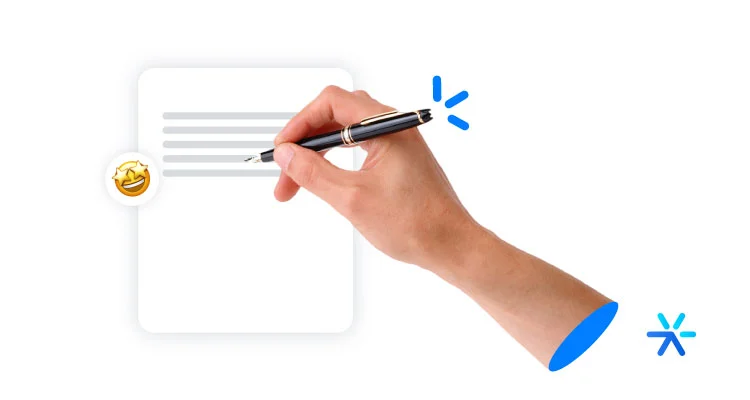
Well, now we’ve understood what multimodal AI is and what it represents for the future of Artificial Intelligence, especially when applied to marketing, right?
But now we need to step down from the world of ideas and go into reality: what’s already possible to do today? Are there multimodal AI systems already in operation? Or is it all just tech hype?
The truth is that multimodal AI is very similar to generative AI in terms of what exists and what doesn’t.
Before generative AI emerged, few people even talked about it. It became popular because of its release.
Multimodal AI is quite similar in this regard. It’s gaining popularity not because of what’s promised, but because of what it already delivers.
Sure, the systems are still in the early stages, but they already exist.
In this section, we’ll focus on multimodal AIs that you can already use today. Then, we’ll talk more about the next steps in their development.
We’ll also dive a bit deeper into the concept of multimodality, which may be much simpler than you imagine.
Let’s continue:
ChatGPT-4 Multimodal
The paid version of ChatGPT-4 is already multimodal.
But it’s only multimodal in its basic model — accepting both text and image inputs and delivering only one type of material, text.
You can use GPT-4 for free for your first daily searches on ChatGPT. But to dive deeper, you’ll need to pay the GPT-4 subscription.
Google Gemini
Of course, Gemini had to appear on this list. Among the multimodal AIs already available in the market, Gemini is the one directly competing with ChatGPT-4.
It offers the basic features of multimodal AI — generating text results from prompts via video, image, and text.
This feature is available via subscription, and unlike ChatGPT, there’s no free version of Gemini.
CLIP (OpenAI)
CLIP is a much more advanced AI model, focused on identifying elements within images.
For example: you provide 10,000 images to the AI and ask it to separate only the ones that contain the color yellow.
This is a more advanced use, not recommended for marketing teams, but rather for companies dealing with huge amounts of data that need to be processed.
Visit the website for more information.
RunWay.ML
Among the multimodal AIs for video production, RunWay ML definitely leads the way.
As we’ll see in the next section, multimodal AIs for video editing are, for the most part, still being developed.
RunWay ML allows for video creation via text prompts and goes beyond that, enabling video editing from images, video transcription, automatic subtitles, and other smaller functions.
You can already use it today by visiting their website.
Multimodal AI Systems in Development (+hype!)
In addition to these examples, I’ve listed two more that are still in development and will likely be released by the end of 2025.
I’ve listed only two because most other multimodal AIs in development are still in their early stages, making it difficult to research or predict what they will or won’t be able to do.
Take Bard, for instance. Google spent months promising countless features, but the AI ended up failing on the day of its launch, in Paris, live.
So, these are the most developed systems so far, without biases or outlandish promises.
Follow along:
Meta Make-a-Video
Meta is working on a multimodal AI for simple video production, with less focus on photorealism and more on integrated functionalities.
It will allow for video creation in three main ways:
- From a text prompt;
- From a static image;
- From a video.
However, there’s even communication between these three different ways of generating the final result.
For example: you can add a video and an image and ask the AI to place the image in the video’s background.
Or you can add an image and request a different background through text.
This is a basic multimodal AI system that doesn’t seem basic at all.
Although the final result is just one, what makes the system basic is the combination of inputs — which is truly incredible to see.
Visit the website for some examples.
SoundStorm
SoundStorm is so efficient that it’s almost a little scary.
It was “released” in 2023, but it’s still not available to the general public. You can access the demo directly on GitHub.
Your job is to generate parallel audio tracks based on text inputs. What are parallel inputs?
Simple: think of a natural conversation. People rarely talk expecting the other person to finish — interruption is a hallmark of human communication.
However, most unimodal AIs can’t comprehend different inputs, only one at a time.
SoundStorm combines inputs and generates a single track, producing the audio in parallel and integrated.
Watch the demo video to understand better:
Use Generative Multimodal AI for Your Customer Service Today
Leadster is a basic-model Generative Multimodal AI — it only delivers text, but it can accept two different types of prompts.
The basic prompt is generated by the user. The customer service AI can understand natural language and respond in the same way, without the need for menus.
The second functionality, a bit more advanced, is the ability to read data within your page to generate product descriptions or to generate copy for the page itself, if needed.
Try it today and use the system for 14 days, with no credit card required! The whole process takes less than 10 minutes. I’ll be waiting for you!
Thank you for reading and see you in the next article about AI 🤖


